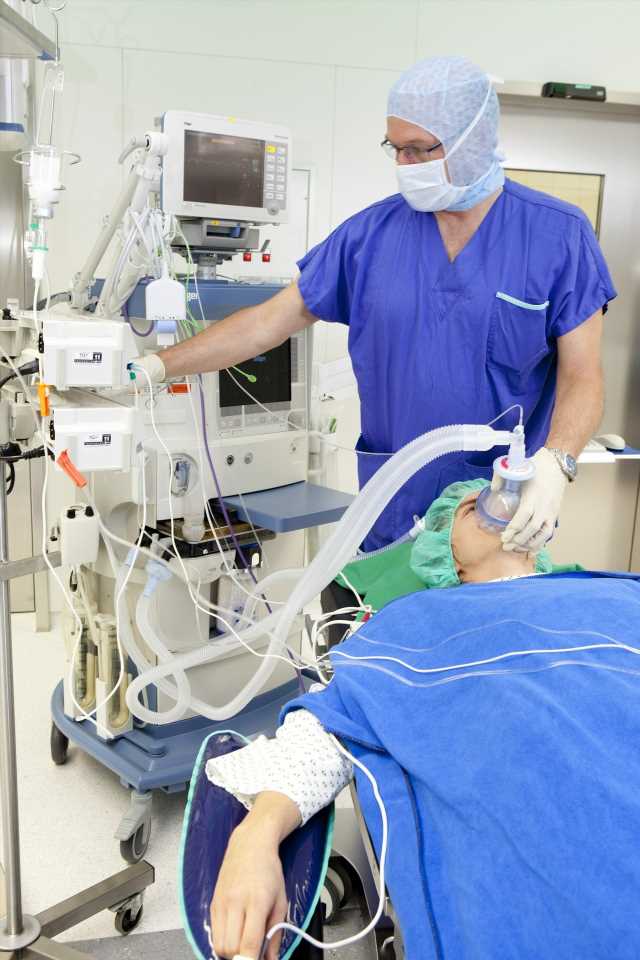
The anesthesia workforce in the UK is facing a huge challenge of large numbers of experienced anesthetists retiring, many at the earliest opportunity, and an aging profile of those that remain. A paper published in Anaesthesia looks at ways to address this problem, with a number of recommendations set out by a working party chaired by Dr. Matt Davies, the new President of the Association of Anesthetists, who is also a Consultant Anesthetist at North West Anglia NHS Trust, UK.
The authors explain, “If the NHS is to have sufficient staff to meet ever increasing demands, it will need to retain older workers. Organizations must therefore ensure that training and the work environment are designed and adapted to meet the needs of older workers…. Clinical Directors and departments that take a strategic approach, with effective job planning and appropriate involvement of human resources and occupational physicians, are likely to get the most from their older workforce.”
In 2020, around 4 in 10 anesthesia consultants were aged over 50. Around 25% of anesthetists plan to leave the NHS in the next 5 years (around 2500 anesthetists); this is on top of the current shortage of 1400 anesthetists (14%). It is predicted that there will be a workforce gap of 11,000 anesthetic staff by year the 2040 if no action is taken. This deficit, unless addressed, would prevent 8.25 million operations from taking place. Several factors have combined to create this problem: increasing workloads (both during and after the COVID pandemic surges), lack of flexibility in working hours, and pension taxation rules.
There are also serious problems at the other end of the system, where new trainee anesthetists are entering. The annual number of 400 training places (increasing to 500 from 2023 for 4 years only) means that between 2000 and 2500 trainees will complete their training and become consultants over the next five years. However, the numbers leaving and retiring far exceed this and leave a growing workload for those that remain.
Among the solutions the working party proposes are allowing anesthetists to pace their careers with part-time working, and addressing the health and educational needs of anesthetists as they age; having standardized retire and return policy, thus allowing experienced anesthetists to return after their official retirement date; and a review of factors such as the current UK National Health Service (NHS) pension entitlements that could, in effect, be forcing UK doctors to retire sooner than they would wish.
The authors discuss the adjustments that can be made to the working environment, saying: “Departments should ensure that equipment is easy to see and hear. Beeps and alarms should be sufficiently flexible to cater for normal age-related hearing loss and drug labels and monitor displays should be high contrast and in larger print.”
Older workers must feel confident to discuss concerns, and be allowed to adjust their working patterns, when confronted with problems related to aging—such as menopause, sight and hearing loss, and any chronic health condition. Dr. Davies says, “Older workers also struggle more to adapt to night shift working so discussing with the individual if they should cease night work or reducing the frequency they must do night shift work would surely be better than losing them altogether from the department. That said, we must also be sensitive to the concerns of the other team members who would inevitably end up working more night shifts to cover this.”
Other factors that could encourage older doctors to keep on working include:
- Changes to job plans with fewer intense, high pressure or late running operating theater lists. This could include older doctors doing more out-of-theater work such as pre-assessment sessions or acute pain ward rounds.
- Encourage older doctors to work on lists with trainees with an emphasis on teaching.
- Greater involvement in non-clinical roles such as education, management and leadership, governance appraisal, mentorship and research.
The authors conclude, “Much of what is discussed here is about valuing, supporting and promoting well-being for all anesthetists, no matter what the stage of their career. There are multiple sources of evidence to suggest that is not happening. Anesthetists are working at full capacity for the majority of their careers and opportunities to change that for individuals is sadly lacking in the NHS. We need to change our culture to one in which all anesthetists can pace their careers, and continue to work well as they age. This is to help support the individual and empower them to manage their careers. It will also keep experienced clinicians within departments for longer. Without change, the workforce gap will continue to widen.”
Dr. Davies adds, “The Working Party’s aim was to address the growing deficit in anesthetists in the NHS by considering how best to increase the retention of the older clinicians. The deficit is rising much quicker than expected due to the effect of the working conditions within the NHS that are exacerbated by the COVID pandemic, the workforce gap, the punitive pension taxes and the working conditions we find ourselves in.
Source: Read Full Article
